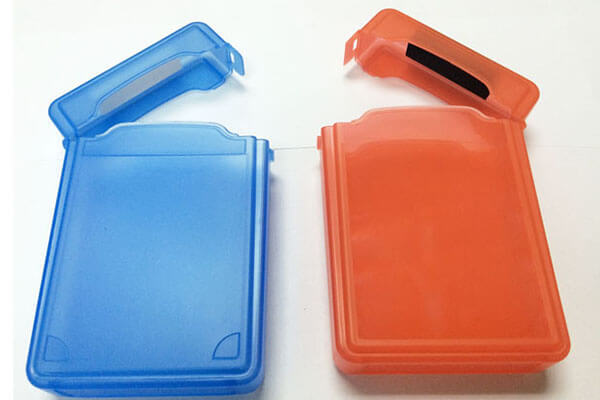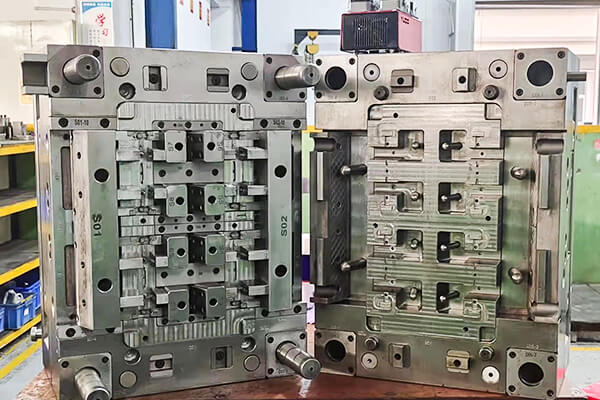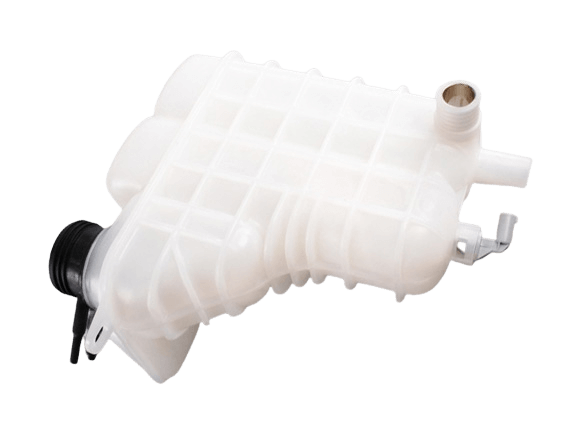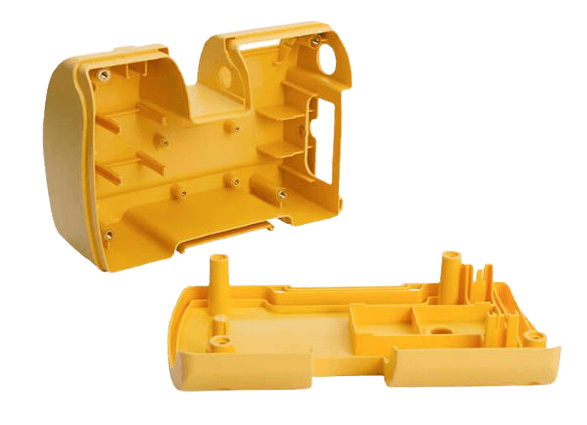Types of Injection Moulding: Category and Feature
Injection moulding has different types, each with its own unique features and benefits, and each suitable for specific applications and requirements. Choosing the right injection molding technology depends on factors such as the desired part characteristics, production volume, material properties, and cost considerations. This article introduces the classification of injection molding technologies and their respective advantages. By understanding the different types of injection moulding, you will gain insight into how to choose the injection moulding technology that best suits your product production requirements.
What is Plastic Injection Moulding?
Plastic injection moulding is a mass-production method that uses an injection molding machine, melted plastic material, and a precisely engineered tool mould. This process enables the efficient and rapid manufacturing of plastic parts in large quantities. It is a highly versatile and efficient method. Plastic injection moulding offers several advantages, including high production efficiency, repeatability, and the ability to create complex shapes. It is widely used in various industries, such as automotive, electronics, medical devices and consumer goods.

Advantages of Using Injection Moulding
Using injection moulding offers several advantages in the manufacturing process:
- 1.High Efficiency: Injection moulding is a highly efficient production method, allowing for the rapid production of large quantities of identical parts.
- 2.Design Flexibility: Injection moulding allows for intricate and complex part designs. The molds can be customized to create various shapes, sizes, and intricate features with precision.
- 3.Wide Material Selection: Injection moulding supports a vast range of plastic materials, including thermoplastics and elastomers.
- 4.Cost-Effective for Mass Production: Once the initial tooling and mold setup costs are covered, injection molding becomes a cost-effective method for large-scale production.
- 5.Consistent Quality: Injection moulding ensures high repeatability and precision in part production.
- 6.Reduced Waste: Injection moulding generates minimal material waste compared to other manufacturing processes.
For more information, see our article on Advantages of Injection Molding
Why are Injection Molds Necessary?
Injection molds offers a range of advantages in plastic injection molding, including:
- 1.Unlimited Possibilities: Custom injection moulds enable the production of a wide variety of products, ranging from medical devices to high-end mechanical components. By tailoring the mold design to specific applications, manufacturers can achieve faster and more efficient production processes.
- 2.Material Flexibility: Different plastic resins have varying properties and behaviors during the injection molding process. Custom mold designs take into account the specific characteristics of the chosen plastic material. This ensures optimal performance and reduces issues such as shrinkage, improving the overall quality of the final product.
- 3.Consistent Product Quality: Injection moulding tooling designs contribute to a significant reduction in manufacturing errors. The automation involved in the process minimizes human error, resulting in improved consistency and precision in the produced parts.
- 4.Streamlined Production: Custom mold designs allow for streamlined production processes. The molds are designed to optimize cycle times and maximize production efficiency.
In summary, injection molds in plastic injection molding offer many advantages, including the ability to manufacture a wide variety of products, improved material selection, enhanced product consistency, simplified production, and cost-effective manufacturing. These advantages make custom injection molds a valuable aspect of the injection molding process.
Importance of Understanding Different Types of Injection Moulding
Understanding the different types of injection moulding is of great importance for several reasons:
- 1.Optimal Product Selection:
- 2.Process Efficiency:
- 3.Quality and Consistency:
- 4.Cost-effectiveness:
- 5.Industry-specific Requirements:
- 6.Adaptability to Innovation:
Each type of injection moulding has its unique characteristics, advantages, and limitations. By understanding the different types, manufacturers can select the most suitable method for their specific product requirements.
Different types of injection moulding may vary in terms of production efficiency. By choosing the appropriate method, manufacturers can optimize the production process, minimize cycle times, and maximize output.
The selection of the right injection moulding type plays a crucial role in achieving high-quality and consistent products. Understanding the different types helps manufacturers identify the most suitable approach for maintaining product quality and consistency throughout the production process.
By selecting the most appropriate method, manufacturers can optimize the use of resources, minimize material waste, and reduce production costs.
Different industries have unique requirements and standards for their products. For example, industries such as automotive, medical, or electronics may have specific requirements related to material selection, regulatory compliance, precision, or performance. By choosing the appropriate injection moulding type, manufacturers can meet these industry-specific demands efficiently.
The field of injection molding is continuously evolving, with new technologies, materials, and processes emerging. By understanding the different types, manufacturers can stay updated with the latest advancements and innovations.
Understanding the different types of injection moulding is crucial for manufacturers to achieve the best production results and maintain a competitive edge in the industry by optimizing production processes, controlling costs, meeting industry-specific requirements, and more.
Classification of Injection Moulding Technology
There are six main injection moulding technologies in the injection molding industry, including gas-assisted injection molding, thin wall molding, liquid silicone injection molding, structural foam molding, 3D printing and metal injection molding. Each of which uses different materials, has different advantages and disadvantages, and is used in different industries. When customizing injection molding products, it is necessary to choose the appropriate injection molding technology according to the characteristics of the products.
Gas-assisted Injection Molding
Gas-assisted injection molding (GAIM) involves the injection of molten plastic into the mold cavity along with a high-pressure gas. This process utilizes the gas to displace the plastic material and create hollow sections or complex geometries within the molded part. GAIM is widely used for producing lightweight, complex, and structurally reinforced plastic components.
- Advantages: The advantages of gas-assisted injection molding stem from its ability to reduce material usage and cooling time. By filling thicker sections with gas, the process minimizes warping and promotes faster cooling as the plastic contacts the colder mold walls. The pressure exerted by the gas reduces shrinkage during cooling and helps prevent the appearance of sink marks. Additionally, gas-assisted injection molding requires lower clamping forces and reduces residual stresses, resulting in a more stable injection molding process.
- Disadvantages: Gas-assisted injection molding has some limitations. It is typically suitable for single-cavity molds, as multiple cavities can complicate gas channeling, especially if the cavities are unique. Certain materials may react with the gas or become foggy when it interfaces with the material’s surface, making clear plastics unsuitable for gas-assisted injection molding.
- Materials: Acrylonitrile butadiene styrene (ABS), Polycarbonate (PC), High impact polystyrene (HIPS), Nylon, Polybutylene terephthalate (PBT), Polyethylene terephthalate (PET), Polypropylene ether, Polypropylene, and other plastic materials.
Thin Wall Molding
Thin wall molding refers to the injection molding process used to produce thin-walled plastic parts with wall thicknesses typically less than 1mm. It requires high injection speeds and precise control to ensure the material fills the mold quickly and uniformly. Thin wall molding finds applications in packaging, electronic components, and consumer goods, where lightweight and cost-effective parts are needed.
- Advantages: Thin-wall injection molding offers several advantages, including cost savings and faster production. The reduced wall thickness of plastic parts leads to lower material costs and overall resource consumption compared to traditional injection molding methods. The shorter cycle time of thin-wall injection molding results in increased production efficiency, and the lighter weight of the parts reduces emissions during shipping. Thin-wall injection molds can also be made from recyclable plastics, contributing to sustainability efforts.
- Disadvantages: Thin-wall injection molding has its drawbacks. The molds and machines used in this process tend to be more expensive than those used in traditional injection molding. The operation of thin-wall injection molding requires skilled and trained molding technicians due to the need for precise control and low tolerances. Any errors or defects can have a significant impact on the final product. Technicians and designers must carefully analyze the project for potential defects and optimization opportunities, which can lead to longer lead times for molds and overall project completion. Additionally, thin-wall injection molding requires higher pressures, necessitating the use of stress-resistant machine components that can perform reliably over thousands of cycles.
- Materials: Nylon, Polypropylene (PP), Polyester, Polystyrene, Cellulose plastic, Polyoxymethylene (POM), and other plastics with good fluidity.
Liquid Silicone Injection Molding
Liquid silicone injection molding (LSIM) is a process that involves injecting liquid silicone rubber into a mold cavity to produce elastomeric parts. LSIM is known for its ability to create complex shapes, high precision, and excellent sealing properties. It is widely used in industries such as healthcare, automotive, and electronics for producing medical devices, seals, gaskets, and keypads.
- Advantages: Liquid silicone injection molding offers numerous distinct advantages. One key advantage is that the material remains in its liquid form, eliminating the need for melting and enabling immediate use. Silicone solidifies quickly and, when the machine is properly engineered, produces minimal waste or burrs. This technology automates the injection process, reducing the likelihood of operator errors. Additionally, the process poses lower risks as the material remains at ambient temperature, except within the mold. Unlike many thermoplastics used in injection molding, silicone products are biocompatible, highly resistant to chemicals, temperature variations, and electricity, making them stand out in this field.
- Disadvantages: Liquid silicone injection molding does have its limitations. Once silicone material undergoes vulcanization, it becomes irreversible, meaning that once a part is formed, it cannot be reprocessed. Recycling of silicone products is not possible, and any mistakes made during the molding process cannot be rectified by converting the material back into stock, as is the case with other types of injection moulding. Moreover, liquid silicone requires specialized equipment, which may be more challenging to acquire and maintain compared to standard injection molding equipment.
- Materials: Commonly used materials in liquid silicone injection molding include: Standard silicone, Medical-grade silicone, Resistant silicones, Optical silicone and more.
Structural Foam Molding
Structural foam molding is a low-pressure injection molding process used to manufacture large and lightweight plastic parts with a cellular core structure. This technique involves injecting a foaming agent along with the molten plastic into the mold cavity, resulting in parts with improved strength-to-weight ratios. Structural foam molding is widely used in applications such as automotive components, furniture, and industrial equipment.
- Advantages: It can produce large, lightweight, strong, and cost-effective parts, with the ability to expand to the size of car roofs and other substantial products while using less material due to its natural porosity. The porous nature of structural foam also contributes to weight reduction without compromising strength; these parts are strong, durable, and up to eight times stiffer than solid polymers. Structural foam injection molding is easy to mold, easily accommodating variable thickness walls, experiencing less stress during the process, and resistant to warping, resulting in fewer instances of damaged molds and machines. Structural foam parts are also quick to produce, easily painted, and largely unaffected by temperature differentials.
- Disadvantages: The disadvantages of structural foam molding are primarily related to the foam material itself, with rough surface finishes being a common issue. Wall thicknesses cannot be less than ¼ inch thick, and generally require more post-processing than other types of injection moulding. Additionally, structural foam molding has lower production speeds than other injection molding techniques.
- Materials: Common materials used in structural foam injection molding include: Polyurethane, Polycarbonate, Polyphenylene oxide (Noryl), Polybutylene terephthalate, Acrylonitrile butadiene styrene and other plastic materials that can work in a foam.
Metal Injection Molding
Probably the newest and most unique type of injection molding, metal injection molding allows for the production of injection-molded metal products. Metal injection molding (MIM) combines powder metallurgy and plastic injection molding techniques to produce complex metal parts with high precision and dimensional accuracy. MIM is used in various industries such as automotive, aerospace, and electronics for producing small, intricate metal parts.
- Advantages: Metal injection molding offers several advantages, including the ability to produce metal parts that were previously impossible to create using traditional manufacturing methods. It can also mold a high volume of parts in a single step, which can rival the casting process for small metal parts. Metal injection molding offers high precision for final products, with features such as knurling, holes, and other fine details. Wall thicknesses can be made with narrow dimensional tolerances, often in the hundreds of micrometers, and virtually no waste is produced, making it a significant benefit compared to other metal manufacturing techniques.
- Disadvantages: The major downside of this injection molding technology is that it can be relatively expensive and limited to lower volumes and sizes of parts. The equipment required for metal injection molding is quite expensive, and currently, the applications for metal injection molding are mainly in high-end applications requiring complex and detailed metal parts.
- Materials: Commonly used materials in metal injection molding include: Stainless steel, Tungsten carbides, Various alloys, Cobalt-chrome, Titanium, Nickel superalloys, Molybdenum-based metals, Composites and more.
3D Printing
3D Printing (Additive Manufacturing): While not strictly an injection molding technique, 3D printing has gained popularity in the manufacturing industry. It uses additive manufacturing technology to create three-dimensional objects by depositing material layer by layer. In recent years, advancements have been made in 3D printing technologies that incorporate plastic injection molding principles, allowing for the production of functional and durable plastic parts.
- Advantages: The advantages of 3D printing include the ability to create complex geometries and structures, rapid prototyping, customization, reduced waste, and the potential for cost savings in certain applications.
- Disadvantage: The disadvantages of 3D printing include limited material options, slow production speeds for larger parts, limited strength and durability compared to traditional manufacturing methods, high equipment and material costs, and the need for post-processing and finishing work. Additionally, 3D printing may not be suitable for certain applications that require a high degree of precision or accuracy.
- Materials: Thermoplastics(PLA, ABS, Nylon, and PETG), Photopolymers, Metals(titanium, aluminum, and stainless steel), Ceramics, Composites, Wood, paper and more.
What are the Usage Areas of Injection Moulding Technologies?
Injection moulding technology has numerous applications across various industries, including:
- Automotive components
- Medical components
- Consumer goods
- Packaging
- Aerospace
- Construction
- Electronics
- Furniture components
Injection moulding is widely used throughout the industry due to its effectiveness, which brings manufacturers high yields, high repeatability and high reliability, which ultimately leads to long-term stable profits.
Advancements and Emerging Trends in Injection Moulding
Injection moulding has been a crucial manufacturing process for several decades, and it continues to evolve and improve with advancements in technology and new emerging trends. Here are some of the recent advancements and emerging trends in injection molding:
- Additive manufacturing: Additive manufacturing, also known as 3D printing, is increasingly being used in conjunction with injection molding to create molds and prototypes. 3D printing can also be used to produce complex geometries and structures that are difficult or impossible to produce with traditional molding techniques.
- Industry 4.0: The integration of Industry 4.0 technologies, such as automation, artificial intelligence, and the Internet of Things, is transforming injection molding into a more connected, efficient, and intelligent manufacturing process.
- Sustainable materials: There is increasing demand for sustainable and eco-friendly materials in injection molding. Biodegradable and compostable materials, as well as recycled plastics, are being used in injection molding to reduce the environmental impact of plastic waste.
- Micro-injection molding: Micro-injection molding is a specialized form of injection molding that is used to produce small, high-precision parts. This technology is increasingly being used in the medical and electronics industries to produce components for devices such as hearing aids and microfluidic chips.
- Multi-material injection molding: Multi-material injection molding involves the simultaneous injection of two or more materials into a single mold to produce a part with multiple properties and functions.
In summary, these advancements and emerging trends in injection molding are helping to improve efficiency, reduce waste, and expand the range of products that can be produced with this versatile manufacturing process.
Reliable Injection Moulding Services Provider–Sungplastic
Understanding the types of injection moulding and their capabilities plays an important role in your final product. Therefore, choosing the best option for your material and application is critical. If you are choosing a plastic molding manufacturer for your next project, please contact Sungplastic, our professional injection molding services cover mold making, mold design analysis and plastic parts manufacturing. We can help you create high-quality injection molds to create durable and reliable plastic molded parts.
Get in touch with us today and let us help you with all your plastic molding needs today.
About Sungplastic
Sungplastic is a plastic product manufacturer with rich experience in injection molding. According to the different product development requirements, we flexibly adjust the manufacturing process to achieve high quality, high efficiency and more economical.
We offer a variety of manufacturing services: Rapid Prototyping, Tool Making, Injection Molding, Product Design and Development, CNC Machining and Metal Stamping. You can choose from a variety of plastics, silicone rubber, or metal for your product. Regardless of mass production or small batch customization, Sungplastic has always been committed to providing assured, efficient and more economical one-stop processing services for your projects.
Contact us for a free quote and project review.
Get a free quote and design analysis today.
We’ll reply you within 6 working hours. We respect your privacy.




